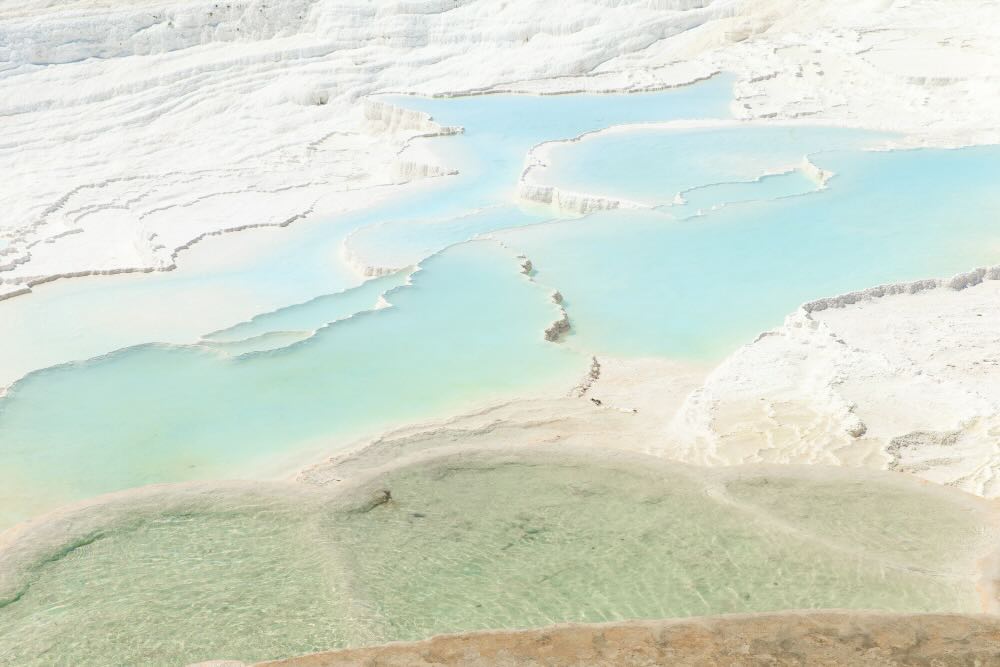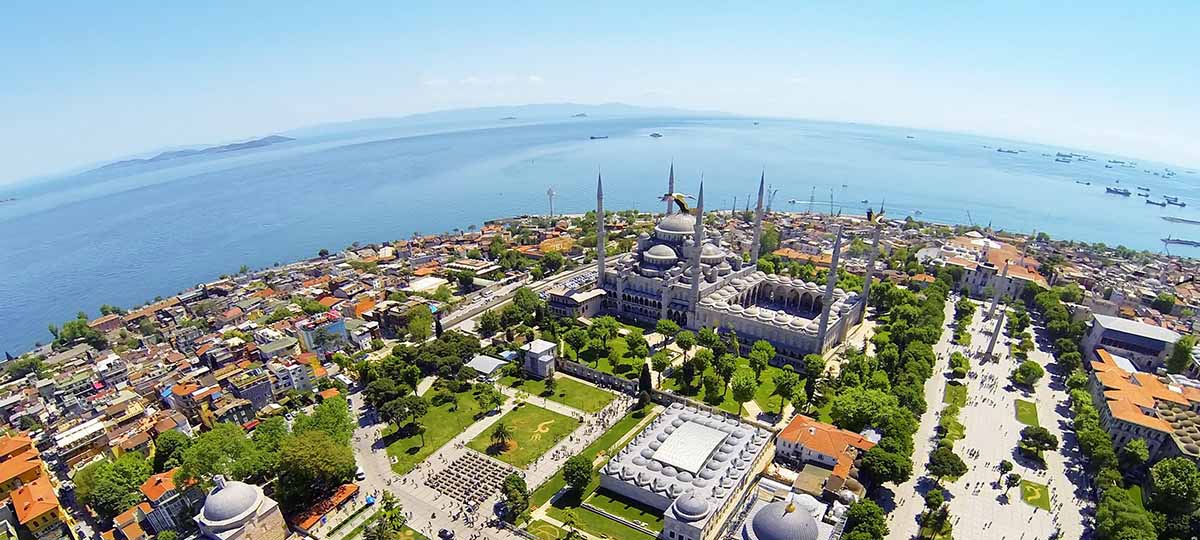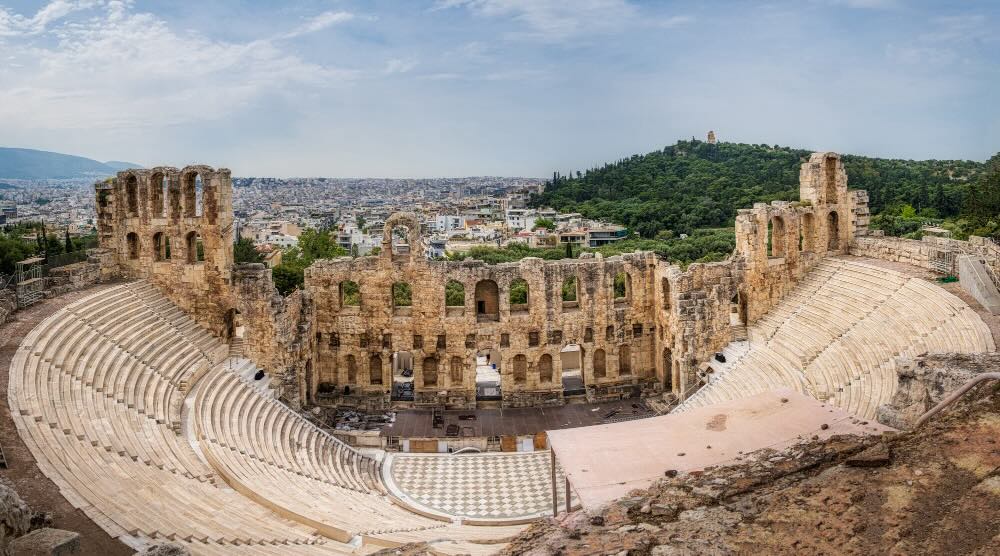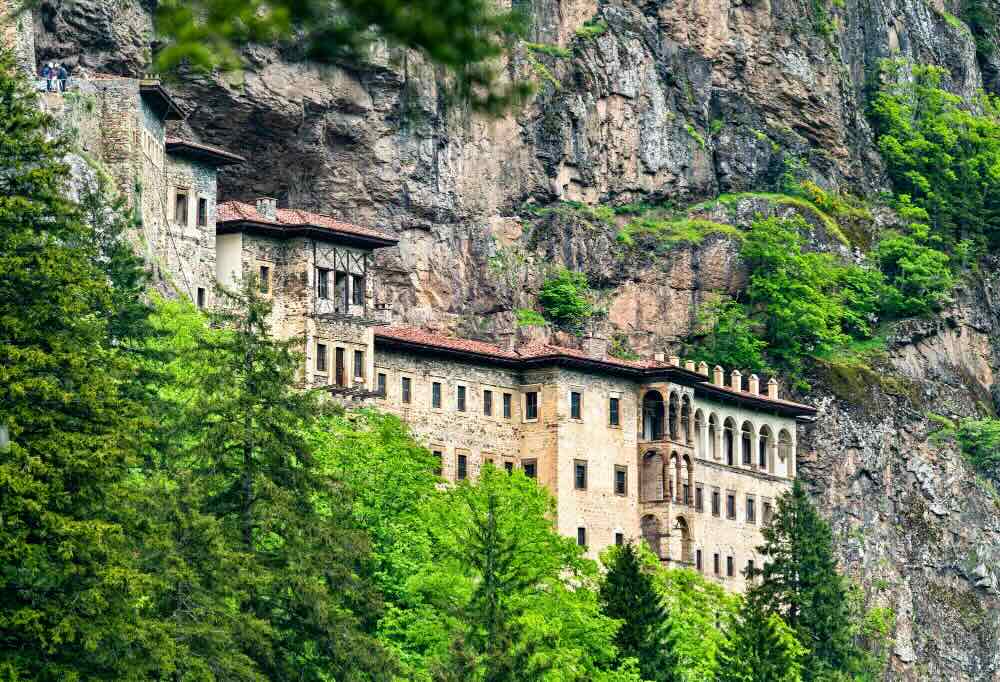Turkey has been a crossroads of civilizations and cultures for thousands of years. The lands of Anatolia, being one of the most important routes in the world, carry the traces of many great civilizations.
Landmarks such as Hagia Sophia and Topkapi Palace in Istanbul reflect the legacy of the Ottoman Empire. The fairy chimneys of Cappadocia and the Ancient City of Ephesus are among the most stunning examples of historical heritage.
Both local and international tourists seek to explore the list of historical places in Turkey, adding vibrancy and cultural depth to their travel plans.
Stone Bridge – Adana
Known as the city of heat and spice, Adana also stands out with its rich historical fabric. Located on the Seyhan River—which flows through the city and into the Mediterranean—the Stone Bridge is one of the oldest bridges in the world still in use today. Built in the 4th century by a Roman emperor, this bridge has become one of Adana’s iconic structures.
The Stone Bridge stands as a symbol that reflects Adana’s deep-rooted history and cultural richness. This magnificent structure has withstood the test of time and continues to captivate those who want to witness the beauty of the city. With its historical atmosphere spread across the surrounding area, the bridge offers an unforgettable experience to its visitors. More than just an architectural work, the Stone Bridge sheds light on Adana’s glorious past and remains a proud symbol of the city.
Pamukkale
Pamukkale is one of the most well-known natural wonders in Turkey, where historical heritage and natural beauty come together. Located in the same area as the ancient city of Hierapolis, Pamukkale is listed as a UNESCO World Heritage Site. As one of the most significant historical landmarks in the country, it offers visitors a truly unique experience.
Pamukkale is famous for its white travertine terraces formed by the deposits of thermal spring waters. These natural formations have captivated and amazed people for centuries with their stunning appearance. Additionally, the crystal-clear waters of Pamukkale offer a relaxing and therapeutic experience for visitors, combining nature’s beauty with a sense of renewal.
Heaven and Hell Caves – Mersin
The Heaven and Hell Caves, one of Turkey’s remarkable historical and natural wonders, are located in the Narlıkuyu district of Mersin. This natural marvel was formed over time by underground spring waters eroding the upper limestone layer. Consisting of two large sinkholes, the site offers visitors a truly unique experience.
Recognized as one of Turkey’s most important natural landmarks, the Heaven and Hell Caves date back thousands of years and feature a structure shaped entirely by nature. These underground caves, formed by subterranean waters, attract both nature lovers and history enthusiasts. It is a must-visit destination for anyone wishing to discover the mysterious and enchanting atmosphere of Turkey.
Istanbul’s Historic Peninsula
Among the many historical sites in Turkey, the Historic Peninsula of Istanbul holds a truly special place. Situated in a city that uniquely spans two continents, Istanbul is one of the most visited cities in the world. Surrounded by history on all sides, the city offers a chance to witness the past with every step. In the Historic Peninsula, you can explore Istanbul’s deep-rooted history and rich cultural heritage.
With its rich historical background and unique geographical location, Istanbul is not only one of Turkey’s most important cities but also one of the most significant cities in the world. Featured in our list of historical landmarks, the Historic Peninsula of Istanbul has hosted numerous civilizations for thousands of years, creating a one-of-a-kind cultural mosaic.
Aspendos Theatre – Antalya
Aspendos Theater, one of the most significant historical sites in Turkey, is an ancient Roman theater built in the 2nd century AD. Included in our list of must-see landmarks, this unique structure could accommodate an audience of approximately 20,000 people. Aspendos stands out with its exceptional acoustic design and its gladiator arena.
Located in the Antalya region, Aspendos Theater offers visitors a fascinating glimpse into the ancient world. It is a site of great historical and cultural significance and a must-visit destination for history enthusiasts.
As one of the best-preserved examples of ancient theaters, Aspendos continues to captivate its visitors with its timeless legacy, echoing the grandeur of a bygone era.
Ancient City of Ephesus
Located in the Selçuk district of İzmir, the Ancient City of Ephesus is among the most significant historical sites listed as a UNESCO World Heritage Site. One of the 12 cities of Ionia, Ephesus is a major historical location that carries the traces of various civilizations. With a history dating back to as early as 6000 BC, the city holds great historical and cultural value and offers visitors a truly unique experience.
Protected by UNESCO, the Ancient City of Ephesus is home to many ruins from the Ancient Greek period. Representing a rich legacy of historical and archaeological significance, Ephesus greatly contributes to the cultural fabric of İzmir. As an open-air museum that brings the past into the present, it is a must-visit destination for anyone traveling to the region.
Kaleiçi – Antalya
Kaleiçi, known as the historical center of Antalya and located in the heart of the city, offers a truly unique atmosphere to its visitors. This ancient settlement, which began forming in the 2nd century BC, is Antalya’s first residential area and is surrounded by ancient city walls and historic buildings.
As you stroll through the narrow streets of Kaleiçi, you’ll witness the stunning architecture of traditional houses and get a glimpse into the enduring local lifestyle that dates back centuries. Still home to many locals today, Kaleiçi offers both local and foreign tourists a vibrant and enjoyable experience filled with history and charm.
Cappadocia
Recognized as one of Turkey’s natural and historical treasures, Cappadocia is located within the borders of Nevşehir and is a one-of-a-kind landscape sculpted by nature. Famous for its fairy chimneys, underground cities, and wine cellars, the region is considered one of the most unique places in the world.
Cappadocia reflects the traces of natural formations on Earth and has amazed people for centuries. With its rich historical and cultural heritage, Cappadocia offers an unforgettable experience that blends visual beauty with historical depth.
Ancient City of Patara
The Ancient City of Patara, once the capital of the Lycian League, holds a significant place in history and has witnessed many important events. Patara is home to the world’s first known democratic parliament building and is recognized as the birthplace of democracy in the Lycian region.
One of the most striking structures in Patara is the Neron Lighthouse, restored with original stones and drawing considerable attention from visitors. Additionally, the first wireless telegraph station built during the Ottoman period is also located in Patara, marking a major advancement in communication at the time.
When you visit Patara, you get the chance to explore the ancient capital of the Lycian League and delve into the rich history of the region. As you walk through the ancient ruins, you’ll embark on a journey through time where the past and present exist side by side.
Sumela Monastery
According to the Greek Orthodox tradition, the Sumela Monastery is located in the Maçka district of Trabzon and consists of a monastery and church complex built on a steep cliffside. Constructed in line with the architectural traditions of early Christian churches, it bears similarities to the rock-cut monasteries found in Cappadocia. Positioned at an altitude of 1,150 meters above sea level, the monastery is renowned for its impressive frescoes that adorn the interior walls with detailed religious figures. A special religious ceremony is held here once a year.
Ancient City of Sagalassos
The Ancient City of Sagalassos is located in the Ağlasun district of Burdur province and rose to prominence as a major city during the Roman Empire. Known in antiquity as part of the Pisidia region, Sagalassos is now listed as a UNESCO World Heritage Site. Archaeological evidence suggests that the area has been inhabited since 1000 BC, and its wealth of mineral resources and natural water supplies contributed to its long-lasting presence. Sagalassos is one of Turkey’s key archaeological and tourist destinations, offering great historical and cultural value.
Safranbolu
Safranbolu is a city located in the Western Black Sea region of Turkey, with a history stretching back over 3,000 years. Its name derives from the saffron plant cultivated in the area. Safranbolu is famous for its well-preserved Ottoman houses, similar to those found in places like Berat in Albania, Ohrid in North Macedonia, as well as Beypazarı and Göynük in Turkey. Thanks to its unique architectural and historical character, Safranbolu is listed as a UNESCO World Heritage Site.
As one of the oldest settlements in the region, Safranbolu is often described as a paradise. Visitors can explore its rich Ottoman-era cultural and historical heritage. Every corner of Safranbolu tells a different story, offering a truly unique experience to all who visit.
Ancient City of Letoon
The Ancient City of Letoon was the religious center of the Lycian civilization and represents a historically significant archaeological site. Alongside the Ancient City of Xanthos, Letoon is inscribed on the UNESCO World Heritage List. Within the site are three temples—one dedicated to the mother goddess Leto, and the others devoted to her children, Artemis and Apollo.










